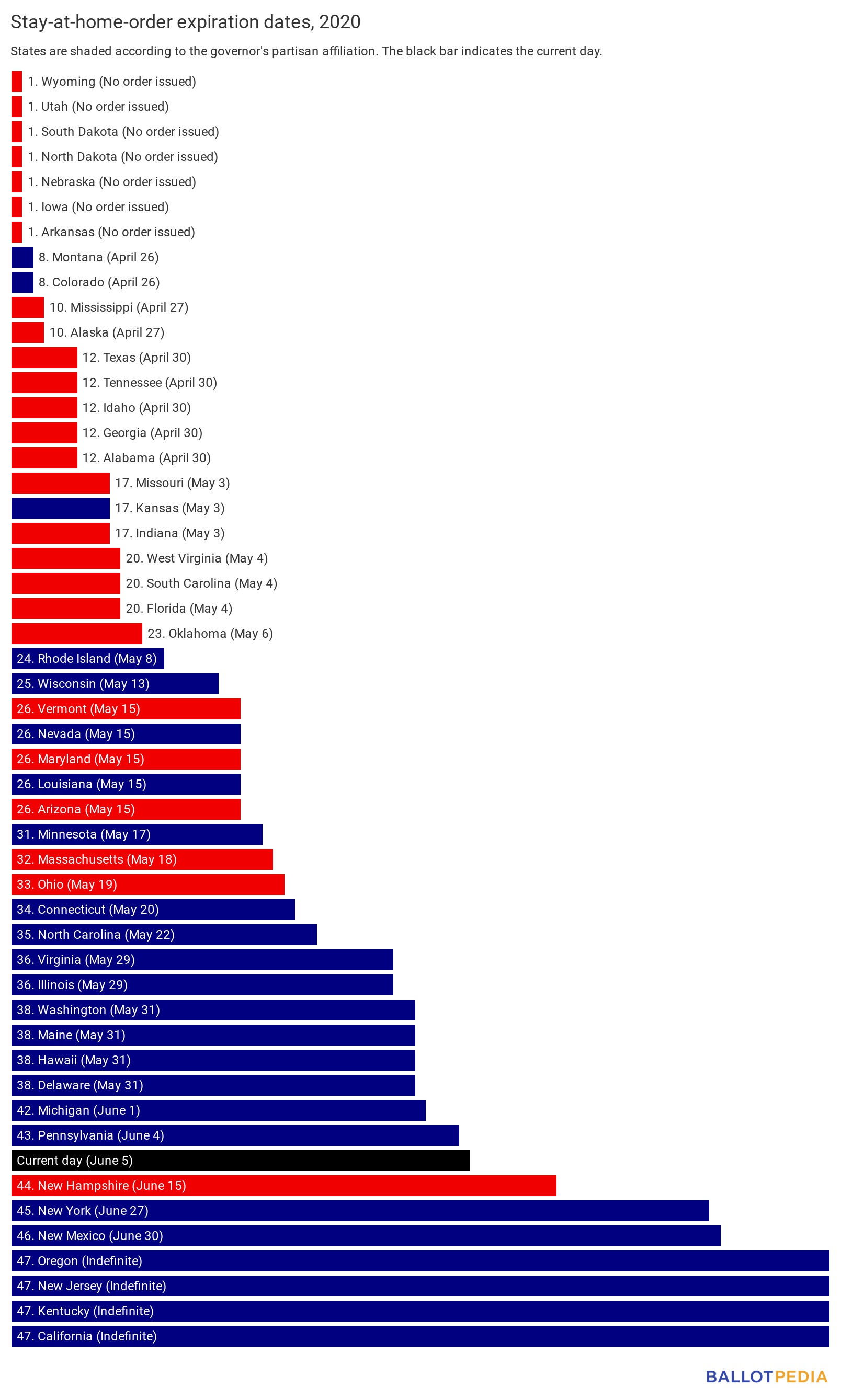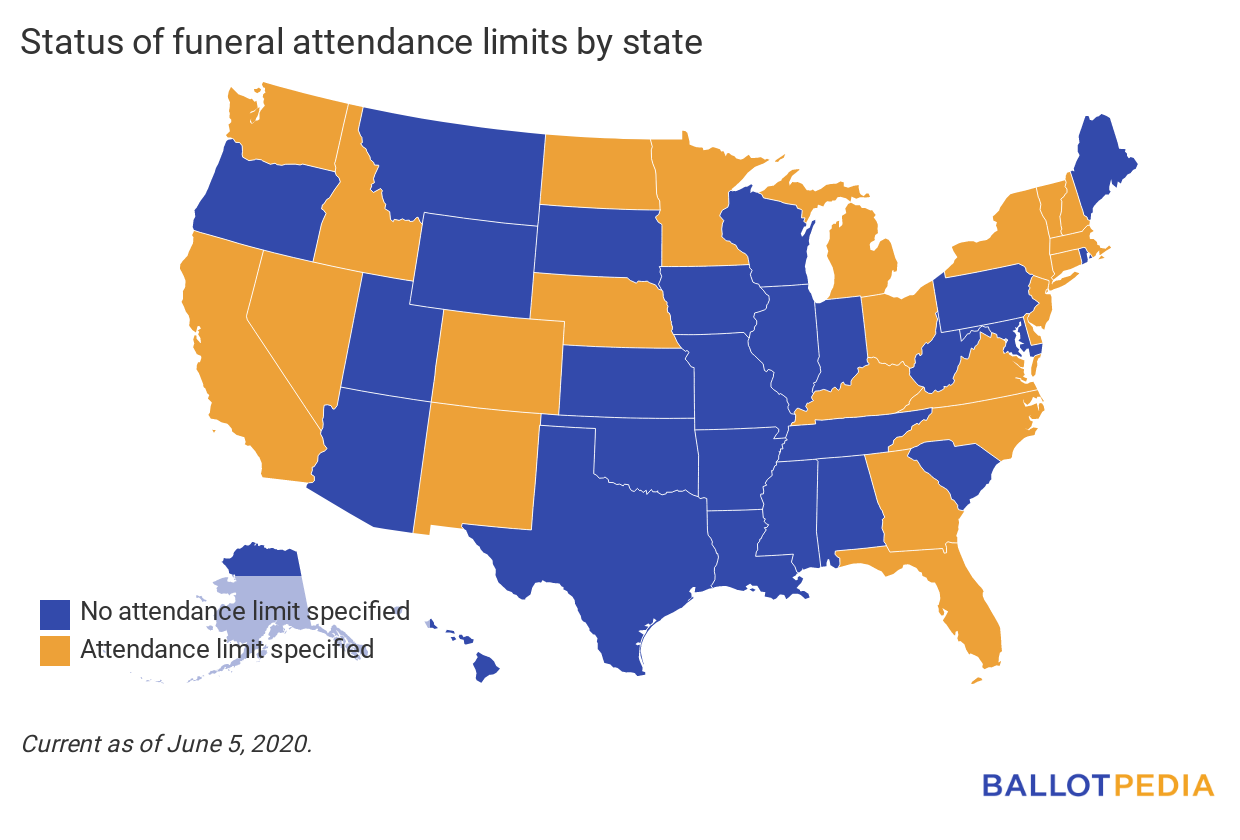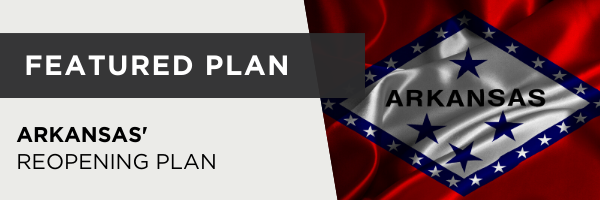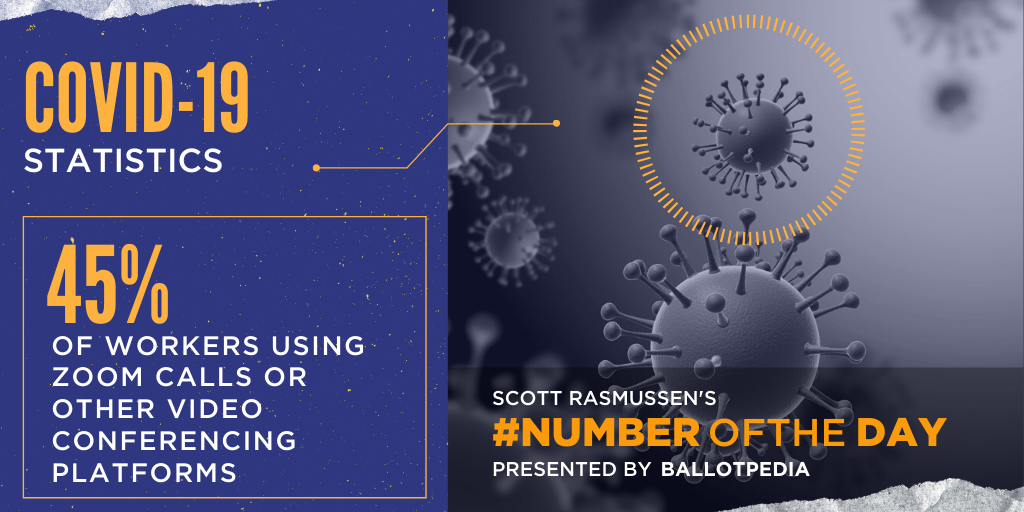Each day, we:
- Track the status of reopening in all 50 states.
- Compare the status of one industry or activity across the country.
- Provide in-depth summaries of the latest reopening plans.
- Give you the latest stories on other reopening plans and ideas.
Want to know what happened yesterday? Click here.
The next three days
What is reopening in the next three days? Which stay-at-home orders will expire?
June 6
- Massachusetts (divided government): Gov. Charlie Baker (R) is expected to make an announcement on June 6 about the start date for Phase 2 of Massachusetts’ reopening. On June 1, Baker outlined which businesses would be permitted to reopen in phases 2, 3, and 4 of the reopening plan. Although Baker did not fix a date for the start of Phase 2, he did authorize businesses to reopen so workers can prepare for Phase 2. The following businesses will be allowed to reopen in Phase 2: retail stores; restaurants; hotels, motels, and other lodging; amateur sports programs; professional sports practice and training programs; personal services; non-athletic instructional classes for youths; driving and flight schools; outdoor historical spaces; funeral homes; warehouses and distribution centers; golf facilities; outdoor recreation facilities; post-secondary schools; day camps; and public libraries.
June 8
- Kentucky (divided government): Educational and cultural activities, horse shows, and in-home child-care programs will be allowed to resume on June 8. Educational and cultural activities include aquariums, distilleries, libraries, some outdoor attractions, and museums.
- Michigan (divided government): The following businesses and activities will be allowed to reopen or resume on June 8: restaurants (50% capacity); outdoor public swimming pools (50% capacity); day camps; and libraries and museums.
- New York (Democratic trifecta): New York City will move into Phase 1 of Gov. Andrew Cuomo’s (D) reopening plan on June 8. New York City is the last of the state’s 10 regions to reopen. Under Phase 1, construction, manufacturing, wholesale supply chains, agriculture, forestry, and fishing can resume. Retailers can open for curbside pickup. The Mid-Hudson Valley region is expected to enter Phase 2 on June 9, and the Long Island region is on track to enter that phase on June 10. Under Phase 2, the following business and activities can resume: offices (50% occupancy), real estate, in-store retail (50% occupancy), vehicle sales, leases and rentals, retail rental, repair and cleaning, commercial building management (50% occupancy), and salons and barbershops (50% occupancy).
- Vermont (divided government): Restaurants can reopen to indoor dining at 25% capacity or 10 total customers and staff combined, whichever is greater, on June 8. Also on June 8, Gov. Phil Scott (R) announced that quarantine requirements will be lifted for out-of-state travelers from counties across New England with similar COVID-19 caseloads to Vermont. The Agency of Commerce and Community said it would release a map on June 8 at 5 p.m. identifying quarantine and non-quarantine counties. Additionally, Vermont residents will be allowed to travel to the non-quarantine counties and return home without quarantining for 14 days.
Since our last edition
Have any states opened? For a continually updated article on reopening status in all 50 states, click here. For our last edition, click here.
- Arkansas (Republican trifecta): Gov. Asa Hutchinson (R) announced the state would be split into five regions for Phase Two of reopening. Hutchinson said a region will have to show no evidence of an increase in coronavirus cases to proceed to phase two.
- Connecticut (Democratic trifecta): Gov. Ned Lamont (D) announced that Phase Two of the state’s reopening plan would begin on June 17, three days ahead of schedule. Phase Two will include indoor dining at restaurants and the reopening of gyms, movie theaters, bowling alleys, museums, pools, and amusement parks.
- Hawaii (Democratic trifecta): Gov. David Ige (D) announced Honolulu County will be able to start reopening businesses like bars, bowling alleys, and movie theaters starting on June 19.
- Illinois (Democratic trifecta): Gov. J.B. Pritzker (D) announced public and private summer school programs could begin reopening on June 4. State officials also said community-based coronavirus testing sites would begin opening to everyone, regardless of symptoms.
- Louisiana (divided government): Louisiana moves into Phase 2 of its reopening plan on June 5. In Phase 2, the following businesses are allowed to reopen at 50% capacity: restaurants and coffee shops; shopping malls; gyms and fitness centers; barbershops and nail salons; movie theaters; racetracks (without spectators); museums, zoos, and aquariums; bars and breweries with food permits; massage services; spas; tattoo parlors; esthetician services; pool halls, bowling alleys, and skating rinks; event centers and wedding venues; and outdoor playgrounds and play centers. Phase 2 will last at least 21 days.
- Maine (Democratic trifecta): Gov. Janet Mills (D) announced on June 4 that the following businesses in 13 rural counties would be allowed to reopen on June 12: tasting rooms and bars (outside service); gyms and fitness centers; nail salons; and tattoo and piercing parlors. York, Cumberland, and Androscoggin counties were exempted.
- Maryland (divided government): Maryland moves into Stage 2 of its reopening at 5 p.m. on June 5. Most businesses that were not reopened under Stage 1 are allowed to resume operations. Personal service businesses, including nail salons, massage parlors, tanning salons, and tattoo parlors, are allowed to resume operations at 50% capacity, by appointment only. State government offices are also resuming operations. The following businesses remain closed: indoor entertainment facilities (e.g., bingo halls, bowling alleys); theaters; malls; fitness centers; and senior citizen activities.
- New Hampshire (divided government): Gov. Chris Sununu (R) announced on June 5 that outdoor attractions, including batting cages and ropes courses, could reopen immediately with capacity limits. Sununu also announced that indoor dining could resume in all counties on June 15. Six counties—Belknap, Coos, Carrol, Cheshire, Grafton, and Sullivan—can reopen restaurants at 100% capacity with tables spaced six feet apart. All other counties may open at 50% capacity. Day camps may resume on June 22, and overnight camps may resume on June 28. Sununu also released guidance for weddings, which include social distancing measures and allowing indoor venues to operate at 50% capacity. Lodging in the state was allowed to resume on June 5. Sunbathing and traditional beach activities can resume on June 5. Beaches were allowed to reopen on June 1 for transient activities, like walking, running, and swimming.
- Ohio (Republican trifecta): Gov. Mike DeWine (R) announced on June 4 that entertainment venues, including movie theaters, museums, and zoos, will be allowed to reopen on June 10. Entertainment venues will be required to follow state guidelines, including social distancing measures, personal protective equipment for staff, and establishing a maximum capacity.
- Oregon (Democratic trifecta): Gov. Kate Brown announced 26 counties that have been approved to enter the second phase of the state’s reopening plan. Twenty-five of the counties are reopening on June 5 or 6, while Tillamook County will open on June 8. Phase Two allows recreational sports and businesses like movie theaters, bowling alleys, and pools to begin reopening.
- Pennsylvania (divided government): The state’s stay-at-home order expired on June 4 at 11:59 p.m., making Pennsylvania the 36th state to lift a stay-at-home order. The 10 remaining red-phase counties entered the yellow phase and 16 yellow-phase counties moved into the green phase. Gov. Tom Wolf (D) announced 12 more counties will enter the green phase of reopening on June 12.
- Virginia (Democratic trifecta): Effective June 5, much of the state entered Phase 2 of the reopening plan. Restaurants and breweries are permitted to offer indoor seating at 50% capacity to parties of up to 50 people. All retail businesses are permitted to reopen at 50% capacity. Gyms can reopen at 30% capacity. Richmond and Northern Virginia will remain in Phase 1.
- West Virginia (Republican trifecta): Effective June 5, movie theaters and casinos can reopen at 50% capacity. The limit on gatherings also increased from 25 to 100 people.
- Washington (Democratic trifecta): Five counties were approved to move into the second phase of the state’s four-phase reopening plan, bringing the total in Phase 2 to 26. In Phase 2, up to five people can gather outside of the house and restaurants and taverns can allow indoor seating at 50% capacity. Gov. Jay Inslee (D) announced a modified plan that allows counties in Phase 1 to adopt some of the looser restrictions in Phase 2. King County, the state’s most populous, applied for and was allowed to move into the modified Phase 1 plan on June 5. Three counties have moved into Phase 3.
Update on stay-at-home orders
Forty-three states issued orders directing residents to stay home except for essential activities and the closure or curtailment of businesses each state deemed nonessential. Seven states did not.
As of June 5, stay-at-home orders have ended in 36 states. Eighteen of those states have Republican governors and 18 have Democratic governors (including Wisconsin, where the state Supreme Court invalidated the stay-at-home order).
Of the seven states with active stay-at-home orders, six have Democratic governors and one has a Republican governor. They are (with expiration date):
- New Hampshire (June 15, Republican governor)
- New York (June 27, Democratic governor)
- New Mexico (June 30, Democratic governor)
- California (no set expiration date, Democratic governor)
- Kentucky (no set expiration date, Democratic governor)
- New Jersey (no set expiration date, Democratic governor)
- Oregon (no set expiration date, Democratic governor)
Here’s which stay-at-home orders have expired, and when the rest are scheduled to expire.

Tracking industries: Funeral attendance
All 50 states began to reopen in some way. Here, we give the status of one industry or activity across the states. Today’s question: which states have limits on funeral attendance? Click here for our tracking spreadsheet on industries and activities in the states.
In 28 states, there is no specified limit on attendance at funeral services. In the other 22 states, there are limits on who or how many individuals may attend a funeral service. While most states default to their indoor gathering size limit, some states have unique limits, including:
- Kentucky – Funeral homes may operate at 33% capacity, although the state’s limit on indoor gatherings is 10 individuals.
- Nebraska – In certain regions, funeral homes may operate at 50% capacity, although the state’s limit on indoor gatherings is 25 individuals.
- North Dakota – Funeral homes may operate at 50% capacity, up to the state’s limit on indoor gatherings of 500 individuals.
- Virginia – In certain regions, up to 50 individuals may attend a funeral service, although the state’s limit on indoor gatherings is 10 individuals.


This is an in-depth summary of one of the latest reopening plans. Is there a plan you’d like us to feature? Reply to this email and let us know. Click a state below to read a previous Featured Plan.
Previous featured plans
On April 17, Arkansas Gov. Asa Hutchinson (R) announced a May 4 target date for beginning Phase 1 of a three-phase reopening plan. Gyms and fitness centers were allowed to open May 4.
Hutchinson ordered certain businesses to close, including bars, gyms, indoor amusement centers, barbershops, and casinos, on April 4. Dine-in services at restaurants were also prohibited, as were gatherings of more than 10 people in any confined indoor or outdoor space. Arkansas was one of seven states that did not issue a stay-at-home order for individuals.
On April 27, Hutchinson said the state would follow White House gating criteria for beginning Phase 1, including:
- a downward trajectory of influenza-like illnesses and COVID-like cases within 14 days
- a downward trajectory of documented cases or of positive test results as a percent of total tests within 14 days
- the ability to treat patients without crisis care
- a testing program in place for healthcare workers
Throughout Phase 1, businesses that Hutchinson ordered closed have been allowed to reopen under certain requirements from the Arkansas Department of Health.
On June 2, Hutchinson said the state was not ready to move into Phase 2 based on health data. On June 4, Hutchinson said that regions of the state might be allowed to progress to Phase 2 at different times. Phase 2 reopening details were not available as of June 5.
On April 18, Hutchinson announced he created the Economic Recovery Task Force, consisting of 27 leaders from public agencies and the private sector, to “recommend a strategy to the Governor for our economy to shift out of low gear consistent with public-health guidance.”
Arkansas was one of seven states (along with Iowa, Nebraska, North Dakota, South Dakota, Utah, and Wyoming) that did not issue a stay-at-home order. On April 7, Hutchinson said he opposed allowing cities to issue their own orders.
Context
- On April 4, Hutchinson issued an executive order closing certain businesses in the state. The order did not require manufacturing, construction, or places of worship to close but detailed social distancing protocols these sites needed to follow in order to remain open. On May 5, Hutchinson issued an order allowing some closed businesses to reopen on specified dates with requirements the state Department of Health issued.
- As of June 5, Arkansas had 8,425 COVID-19 cases and 151 deaths. Arkansas’ estimated population as of July 2019 was 3 million. For every 100,000 residents, the state had 279.2 cases and 5.0 deaths.
- Arkansas is a Republican trifecta, with a Republican governor and Republican majorities in the state legislature.
Phase 1 details
April 27
- Some nonessential outpatient procedures could resume (requirements)
May 1
- Campgrounds open for Arkansas residents with self-contained RVs (bath houses remain closed, automated check-in/check-out)
May 4
- Gyms and fitness centers (screening of staff and customers, maintaining/facilitating 12 feet of social distance, additional requirements here)
- The Department of Health released requirements for places of worship, which were already allowed to remain open under certain conditions (congregants must wear masks with certain exceptions, signage must be posted at entrances, additional requirements here)
May 6
- Hairstylists, barbershops, body artists, medical spas, massage therapy, cosmetology (by appointment only, with screening of customers and employees, additional requirements here)
May 11
- Restaurants for dine-in services (limited to 33% capacity, tables at least 10 feet apart, employees who interact with customers must wear face masks, additional requirements here)
May 15
- State parks opened visitor information centers, museums and exhibits, gift shops, golf pro shops, and marinas. Equipment rentals resumed. (“Staff will limit the number of visitors allowed into the visitor centers and shops, and will enforce social distancing.”)
May 18
- Large outdoor venues, such as theatres, arenas, sports venues, and race tracks (50 people or fewer in attendance, or up to 33% capacity if plan is approved by the state secretary of health, additional requirements here)
- Large indoor venues, such as theaters, arenas, stadiums, and auction houses (50 people or fewer in attendance, or up to 33% capacity if plan is approved by the state secretary of health, additional requirements here)
May 26
- Bars and clubs (limited to 33% seating capacity, tables spaced 10 feet apart, additional requirements here)
June 1
- Community and school-sponsored team sports (At least 6 feet of distance between participants except when actively playing a sport, screening of athletes/coaches/staff, additional requirements here)
Guidance for individuals
The Arkansas Department of Health recommends the following:
- Wash your hands often with soap and water for at least 20 seconds. Use hand sanitizer when soap and water are not available.
- Practice physical distancing. Avoid close contact with others, especially those who are sick, by keeping at least 6 feet between you and others.
- If you think you have been exposed to COVID-19 or develop a fever, cough, or shortness of breath, seek testing. Testing is available in many locations, including ADH Local Health Units.
- Wear a cloth mask when in public and unable to maintain a 6-foot distance from others. Click here to read the CDC’s recommendations. The ADH offers this do-it-yourself cloth mask design.
The department also released guidance for high-risk individuals, available here.
Arkansas Department of Health directives and guidance
For a complete list of directives and guidance the state Department of Health has issued, click here. |





